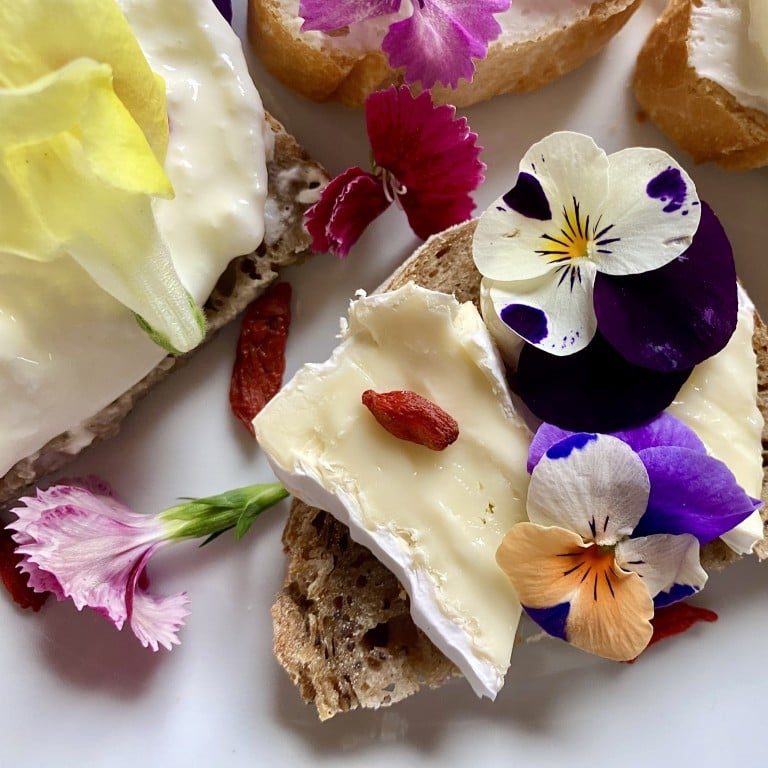Edible flowers finding a place on our plates: how interest in wellness is feeding a demand for florals that offer bioactive compounds such as vitamins, flavonoids, antioxidants and antimicrobials

- Adora Winquist, founder of High Vibe Aromatics and Irina Turcan, co-founder of Erbology, are fans, with both brands creating health foods and drinks based on plants and mushrooms
- Tea is made with flowers, but now rose and lavender are being joined by carnations, elderflower and hibiscus among a new crop of aromatics, while Dr Edward Bach made essences as far back as the 1930s
We’ve been consuming plants to help us stay healthy for millennia, eating them or using them in drinks, tinctures and salves to provide health benefits over and above their culinary value. The flowers of many plants have long been put to use too, and today, with increasing interest in functional health – staying well rather than just treating problems as they arise – there are ever more ways to make use of them.
The resurgence of florals is rooted in their array of medicinal properties. “Extracts derived from flowers contain bioactive compounds, such as flavonoids and essential oils, which contribute to their therapeutic effects,” says Irina Turcan, co-founder of Erbology, a brand creating organic health foods, drinks and adaptogenic powders based on plants and mushrooms. “These compounds exhibit anti-inflammatory, antimicrobial and calming properties, making flower extracts, such as lavender hydrolate or lavender essential oil, valuable additions to skincare, aromatherapy and culinary practices.”

Across cultures and centuries, some blooms have long been celebrated for their ability to soothe, rejuvenate and protect the skin, addressing concerns from dryness to ageing. “In skincare, flower extracts like rose water and lavender water are renowned for their soothing and rejuvenating effects. They help alleviate inflammation, reduce redness and promote cell regeneration, resulting in healthier-looking, more radiant skin,” Turcan says.
Some make much wider claims for the effects flowers may have on our well-being, though not all these claims are yet well supported by scientific evidence.

“Aromatic flowers offer us the quintessential opportunity to harness and activate our own innate healing nature. These allies of emotional healing, radiant beauty and spiritual connection offer us the ability to elevate holistic well-being,” says Adora Winquist, founder of High Vibe Aromatics.
One flower that has definitely found a place in our food and culture is the ancient drink of tea, a blend of flavour and wellness in a cup. Today, however, other flowers are finding a place on our plates. “Culinarily, flowers or hydrolates add not only flavour but also nutritional value to dishes. Edible flowers like rose petals and lavender buds contain vitamins, minerals and phytonutrients, enhancing the nutritional profile of meals while imparting delicate floral notes,” Turcan says, noting that, additionally, their aromatic compounds can stimulate the senses, contributing to a heightened culinary experience.

While rose and lavender might be the first flowers to come to mind for their edible and aromatic qualities, many more options exist. Carnations have a spicy punch with immune-boosting properties, while elderflower, beyond flavouring drinks, is celebrated for its fever-reducing, antioxidant qualities. Hibiscus is recognised for its heart-supporting antioxidants, marigold shines as an antiseptic and healer, and nasturtiums offer a peppery flavour rich in vitamins and minerals. In this context, flowers hold much more than just aesthetic allure, boosting health in an appealingly natural way.